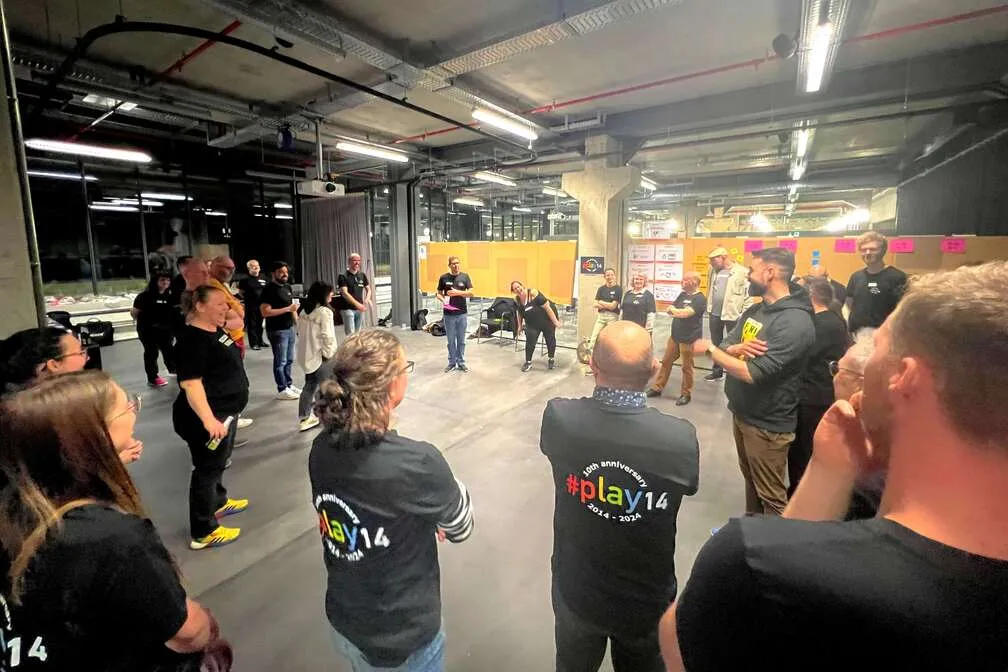
4 Serious Games To Improve Collaboration


We recently attended #play14 in Luxembourg, the international event for serious games that brings together people who believe that games are a great way to learn.
Thanks to this event, we’ve added some new games to our facilitator tool belts. Read on to discover the collaborative games we liked the most and how they help build a team culture and improve communication.
Deep Sea Adventure Game
#play14 provides an excellent opportunity to try out new collaborative board games, like Deep Sea Adventure Game (check the game’s description). In this game, a group of explorers sets out to retrieve treasures from the ocean depths. However, they must do so while sharing a single submarine and a limited oxygen supply. Each explorer has their own treasure objective, yet they must collaborate and share resources to succeed.
Games require 3 to 6 players and last for about 30 minutes. It became clear that adopting a team mindset was essential to the success of our treasure hunt. It’s only by balancing collective cooperation and individual objectives that we could find the path to victory.
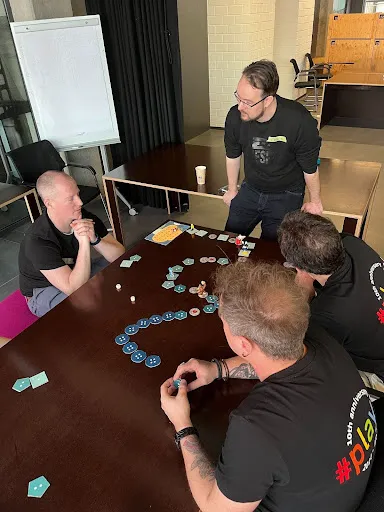
It’s a great game to use when onboarding a new collaborator, or to bootstrap the discussion about some inefficiencies in a given team. It is a great way to test a team’s ability to work together and to identify individuals who can demonstrate altruism or, conversely, selfishness that could jeopardize a project.
Collective “The Mind” Experience
“The Mind” is an engaging cooperative game that emphasizes non-verbal communication. Its easy rules make it an excellent tool for serious gaming. If you’re unfamiliar with the rules of The Mind, I highly recommend giving it a try.
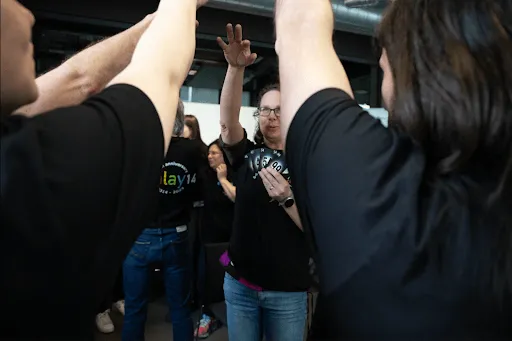
The Mind is an excellent game, but it accommodates a maximum of 4 players. In our workshop, we brainstormed and tested several ideas to play the game with a larger group. Here are the final rules:
Variant of “The Mind” for a large group:
The goal remains the same: to place all cards in increasing order until no one has any cards left. Each level’s card count matches the level number.
In this variant, players form teams. In our workshop, teams had 6 members, but equal team sizes aren’t necessary. Each team has a card placer and several communicators.
Roles:
- Card placer: Holds the cards, visible only to their communicators, and places a card when signaled.
- Communicators: See their own card placer and the communicators of all teams. They use non-verbal communication to signal their card placer when to put down a card.
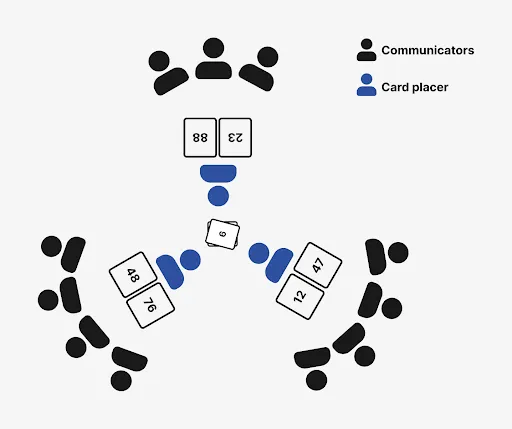
I recommend placing a chair between the card placers so they can easily place cards behind them without seeing the pile, preventing them from knowing the current status of the game.
I found this variant even better than the basic game, as it excels at developing communication skills. In the classic version, players communicate with each other to decide when a card should be played (indicated by yellow arrows). In this new variant, a communicator interacts with:
- Communicators from other teams to confirm if a card should be played (green arrows).
- Their team’s communicators to assess and agree on whether the card placer should play a card (blue arrows).
- Their card placer to signal when and which card(s) to play (red arrow).

I really like this version because it teaches players to tailor messages to different receivers. It further enhances skills in observation, analysis, interpretation, and understanding of non-verbal cues, fostering connection and empathy among players.
“ColorBlind” Game: Enhancing Verbal Communication Skills
Unlike ‘The Mind’, where players communicate non-verbally, in ‘ColorBlind’ players are allowed to speak but are deprived of sight.
“ColorBlind” is a cooperative game consisting of 28 pieces. The goal is to identify the color and shape of 2 missing pieces. Players face three constraints:
- They are blindfolded,
- They are not allowed to exchange or pass pieces
- The facilitator can only answer one question: “What color is this?”
If you aren’t familiar with this game, I highly recommend exploring the complete rules of “ColorBlind”.
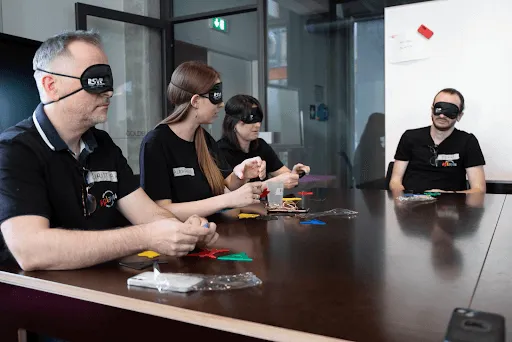
During the workshop, it was intriguing to observe the diverse ways in which individuals described the pieces. While some likened a piece to two crescent moons facing each other, others imagined it as a butterfly.
As the workshop unfolded and non-verbal communication was restricted, verbal communication flourished. We cultivated a shared vocabulary, honed our active listening abilities, and emphasized attention to detail in our communication.
I found this game ideal for improving communication and listening skills within a team. It also helps individuals learn to find their role within the group. If there are multiple leaders or none at all, the game cannot be won. Ultimately, I believe this game is perfect for learning to adapt to others and develop a common language.
Assemble a Puzzle With Hidden Pieces
The workshop was very engaging, even though we were just observers. Each participant received an envelope containing a hidden puzzle piece. Participants then had time to discreetly examine the piece inside their envelope. Next, each participant described their piece (e.g. its shape etc.).
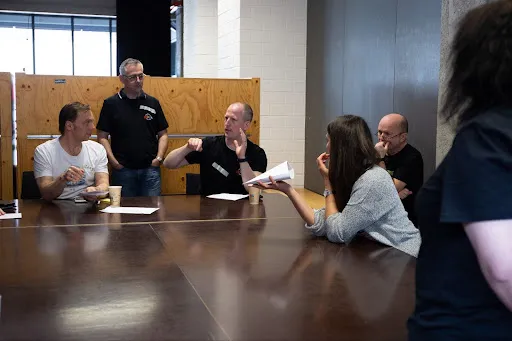
The participants then discussed what strategy to adopt to assemble the puzzle using all the pieces inside the envelopes. The challenge was to arrange the envelopes in such a way as to be able to put the puzzle back together using the pieces on display.
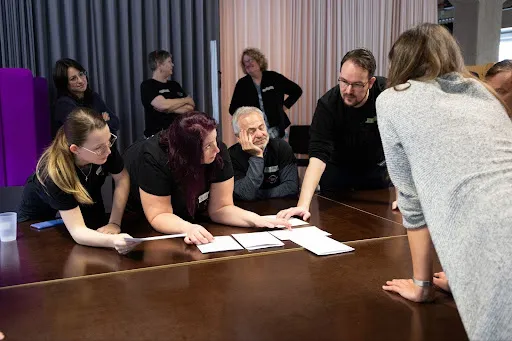 | 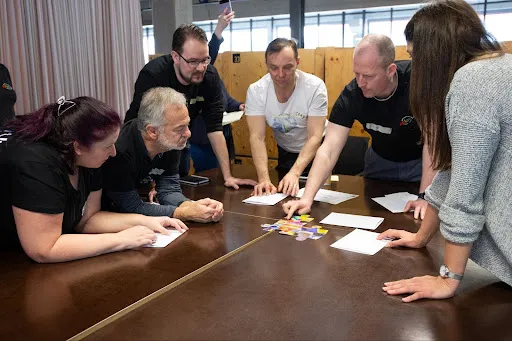 |
|---|
This activity served as an effective serious game illustrating the importance of communication within a team. When someone neglected to provide comprehensive details about their piece, the task of accurately assembling the puzzle became considerably more challenging.
This workshop is ideal for a group of 4 to 8 individuals to optimize each step. It’s a good indicator of who can lead a discussion, who is capable of active listening, who is introverted, and who struggles with communication. It is definitely a useful tool for team building at the start of a project or for improving communication within a team.
Happy birthday, #play14!
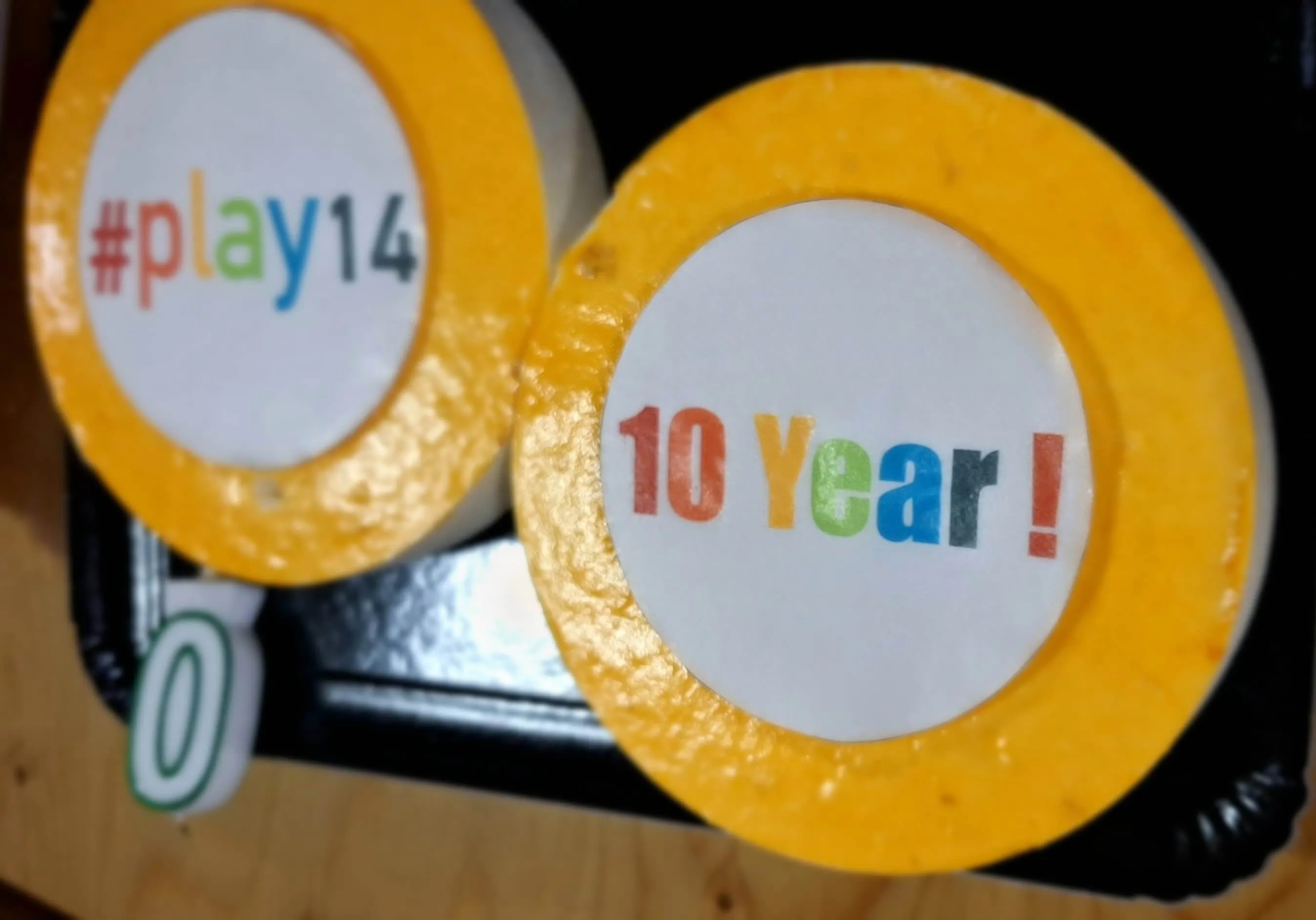
This year marked a special edition as #play14 celebrated its 10th anniversary (if you’re new to #play14, check out this article to learn more). To mark the occasion, a massive escape game was organized, with 50 participants collaborating to solve 60 riddles.
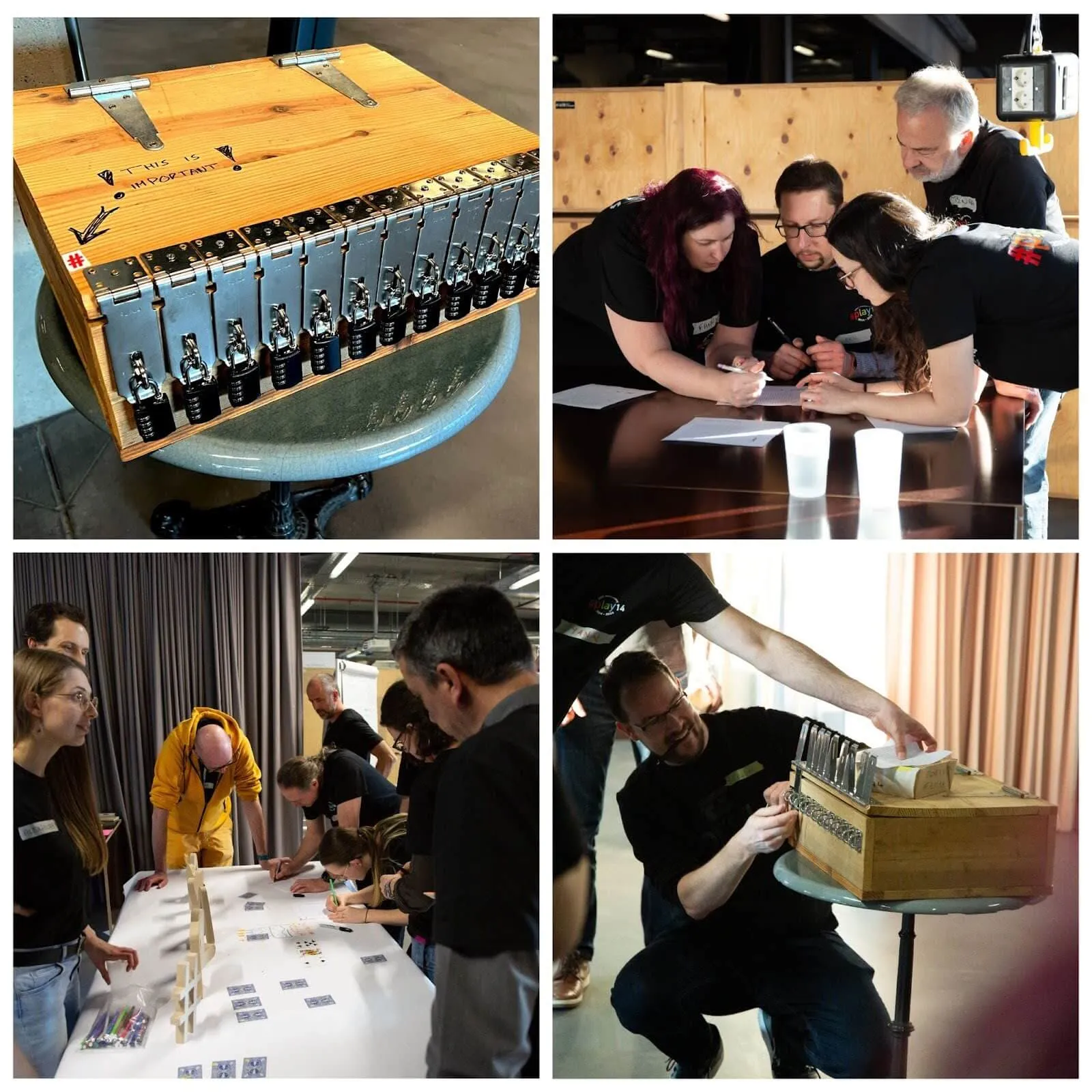
Although the escape game itself was focused on #play14, it was fun and engaging. We played with participants we hadn’t talked to before, and the collective excitement grew quickly. It’s a great idea for a team building activity for a large audience, although it requires a lot of preparation!
Conclusion
From the celebratory kickoff to engaging workshops like Assemble a Puzzle With Hidden Pieces, The Mind, and ColorBlind, we were truly immersed in the spirit of playful learning.
But our adventure didn’t end there. We also participated in workshops focused on team-building games for remote teams, personality-revealing games, and much more. Read about the second part of our day in our next article!
Authors

Facilitator at Marmelab, she lives with two rabbits and loves playing boards games.

Facilitator at Marmelab, Benoît is a family guy, so he can't spend as much time as he'd like on his other passions - sport and music.